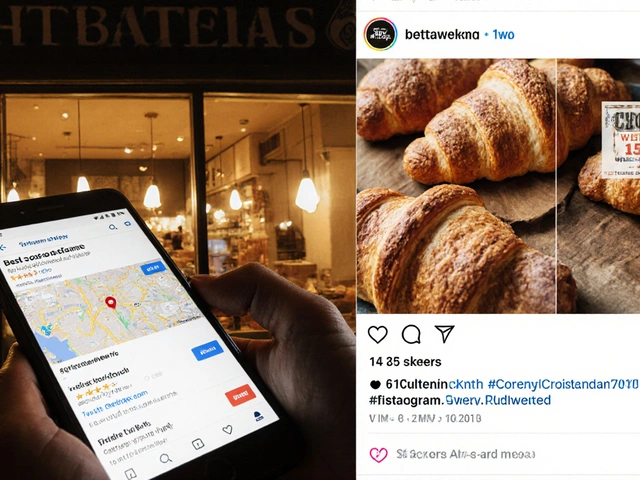Suddenly, ChatGPT is everywhere—your news feed, your inbox, and now, your Facebook. If you're wondering what ChatGPT on Facebook actually does, what you can use it for, or how safe it is, you're not alone. Social media managers, small business owners, and even regular folks looking to save time are all asking the same questions. The truth? ChatGPT for Facebook isn't just about automating replies—it's about working smarter, reaching people faster, and making those endless messages a whole lot easier to deal with.
What is ChatGPT for Facebook—And Why Should You Care?
ChatGPT for Facebook is an AI-powered assistant that can plug right into your Messenger, Facebook Pages inbox, and sometimes even your post comments, turning your account into a smart responder. The biggest draw? This isn’t some clunky old-school bot. It can answer questions, suggest content, write posts, and yes—even help with customer support—around the clock. Whether you run a business page or just get way too many DMs, it’s designed to help you do more with less effort.
Here’s the snapshot of what you get:
- Automated replies in Messenger or your business inbox, using natural, conversational language
- Post or comment drafting, so you can queue up content or encourage more engagement
- On-demand help with brainstorming posts, answering FAQs, or even moderating comments
- Smart integrations: Connect ChatGPT to other tools you use, like e-commerce shops, CRMs, or newsletter software
Meta started rolling out more official partnerships with OpenAI in early 2025, but the ChatGPT flavors you’ll see on Facebook include both built-in services and third-party apps you can add to your workflow.
| Feature | Free Version | Paid Version / Add-ons |
|---|---|---|
| Automated Inbox Replies | Yes (basic) | Advanced, context-aware |
| Content Generation | Up to 10 prompts/day | Unlimited, scheduled |
| Analytics & Insights | No | Yes |
| Integrations (E-commerce, CRM, etc.) | Limited | Full API access |
| Security & Privacy Tools | Standard | Customizable |
How to Get Started: Installing and Using ChatGPT on Facebook
Getting ChatGPT working on your Facebook isn’t rocket science. You just need to match the tool to your needs—are you managing a solo art page? Running a mid-size store? Here’s a simple roadmap:
- Pick Your Tool: Meta now bakes AI tools into many Facebook features, but you can also add ChatGPT to your workflow using external apps (like ManyChat, Chatfuel, or Make.com integrations). Look for their ChatGPT modules, and check the reviews from real page admins.
- Enable Permissions: For most plugins, you’ll need to sign in with Facebook and grant access to your Page’s inbox and content. Meta warns you up front what the AI will see—double-check if you’re okay with this for privacy.
- Set Up Automated Replies: Tell your AI assistant which questions to answer automatically (like “What are your opening hours?” or “Do you ship to Germany?”). Use confident, clear language for guidance—don’t assume it knows your slang.
- Train Your AI (Optional): Better plugins let you upload FAQs, message templates, product lists, or even example DMs. The more data you give, the sharper the replies.
- Test and Monitor: Message your own page as a customer. Try tricky or weird questions to see if the bot gets confused. You can usually tweak settings or turn off auto-response for sensitive topics.
Quick warning: On Business Pages, if you use third-party plugins, Facebook may tag AI-sent messages with a “sent with AI” or “Automated Response” label. That’s transparency—don’t try to hide the bot aspect. If you’re using Meta’s official AI, the transparency banner is automatic.
Best Use Cases and Real-World Examples for ChatGPT on Facebook
The big win with ChatGPT isn’t just answering ‘what time do you open?’ faster. It's about scaling how you interact with your audience. Here’s what’s working in 2025 for both personal brands and businesses:
- 24/7 Customer Support: Local boutiques now use ChatGPT chatbots to reply to order questions and track packages instantly, especially on weekends when staff are offline.
- Managing High Volume DMs: Musicians, podcasters, and TikTokers connect a ChatGPT tool so every message gets a timely response, even if it’s a friendly “I got your note—stay tuned!”
- Automated Comment Moderation: Niche pages (think gaming, indie brands) set ChatGPT to auto-hide spammy comments or drop a friendly answer if someone asks the same newbie question ten times a week.
- Copywriting Help: Content teams plug prompts into ChatGPT (“Write an event announcement with emojis and a playful tone”) and fine-tune the draft instead of starting from scratch.
Studies from Hootsuite and HubSpot in spring 2025 show that pages using AI-powered response tools reply 76% faster and can handle twice the volume of inbound messages with half the human time. That frees you up for—well, actual work.
But don’t just turn it on and walk away. Human touch still matters, especially for complaints, urgent issues, or anything involving money. Use AI to handle routine stuff and let real people take over when nuance matters.

Checklist: Boosting Success—and Avoiding AI Mistakes
- Choose plugins/add-ons with lots of recent, positive daily user reviews (check the Facebook App Directory or G2)
- Update your FAQs and response templates monthly—seasonal offers, new products, or policy changes can throw off your bot
- Check regularly for ‘false positives’—the bot might accidentally answer things it shouldn’t, or miss sarcasm/slang
- Set up notifications for hand-off triggers—words like “urgent,” “complaint,” or “refund” should always alert a real human
- Review privacy settings: Make sure customer data accessed by ChatGPT is limited to what’s truly needed, especially post-GDPR changes in 2025
| Do | Don't |
|---|---|
| Test your bot with real user queries | Assume AI will always catch context |
| Clearly label automated replies | Hide the use of ChatGPT—it hurts trust |
| Keep prompts simple and direct | Feed vague or contradictory guidance |
| Use chatbot logs to spot common issues | Ignore unusual spikes in inbound volume |
Mini-FAQ: Common ChatGPT for Facebook Questions
- Is it safe to use ChatGPT on my Facebook business page? Most top-rated plugins encrypt data in transit, but always review privacy policies. Avoid sharing sensitive client info in automated chats.
- Will Facebook ban me for using external AI tools? As of August 2025, as long as you use apps certified in Facebook’s App Directory and are transparent, you’re in the clear. Shady, spammy bots can get your page penalized.
- Can I use ChatGPT for ads or sponsored posts? You can use ChatGPT to write and review copy, but actual ad planning/buying still needs human approval and Meta’s Ad Manager.
- Does ChatGPT understand my brand’s tone and voice? Only if you give it examples and adjust templates. Start with drafts and review them for fit until it ‘learns’ your style.
- Is this only for big brands? Nope. Solo consultants, artists, local shops—all can use ChatGPT if they want faster, better communication.
Next Steps: What Should You Do Now?
- If you manage a growing Facebook page: Test ChatGPT on a ‘sandbox’ page first before rolling it out to your main account. Track how it handles 20–30 typical daily queries.
- If you’re a freelancer or solo creator: Try out free ChatGPT integrations for scheduled posts and Inbox replies to save time (look for apps with 30-day free trials).
- If you work in a team or agency: Assign one person to manage ChatGPT integration, so there’s always a real human checking quality and privacy compliance.
- If you’re worried about privacy/brand risk: Use Meta's built-in AI tools first, since they maintain higher transparency and stricter data controls.
The promise of ChatGPT for Facebook is real: faster responses, happier followers, and less burnout from answering the same old questions. But, just like any new tool, it works best with good setup, regular checks, and a dash of common sense. If you’re ready to boost your social game, now’s the time—the rest of the world is catching up fast.





